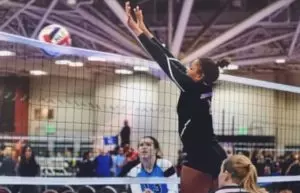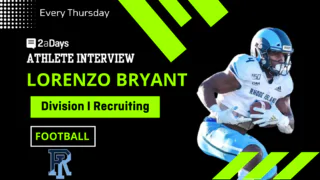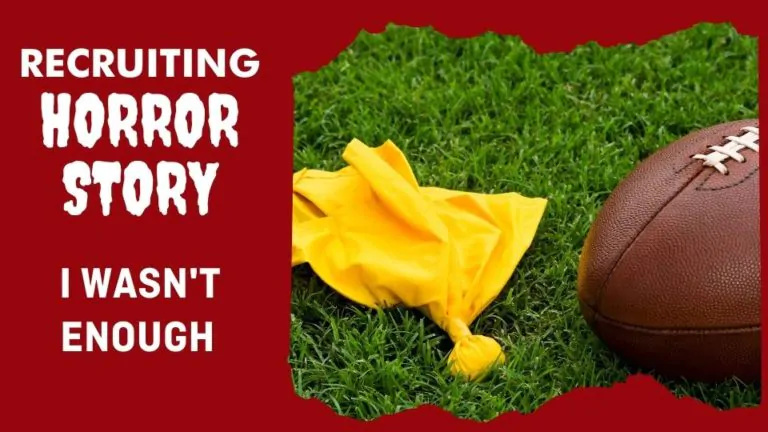Edited by Jaime Evers
Grace is fast. Maybe not Olympics fast, but surely fast enough to compete for DII or DIII cross country and track & field programs. Unfortunately, her speed wasn't what one coach cared about. Instead, he cared about her appearance, saying she didn't look like his “ideal athlete.” The coach said all he needed to in those two words. He thought she was “too big” to fit in with his team.
For too many female athletes, this story is very familiar. In cross country especially, there is a certain body type that many consider to be “ideal.” Stereotypically, cross country athletes are known for being small thin. You won't be seeing many cross country athletes pumping out 200lb squats in the weight room, because that's not the type of athlete they are. Cross country is all about efficiency. If an athlete is going to be running 5,000, 6,000, or 10,000 meters, they are going to need to be efficient every stride of the way.
The Truth Is, However, There Is No “Ideal Athlete”
The truth is, however, there is no “ideal athlete” in cross country or track & field. Every person has a different stature, a different build, and a different way to be their strongest and healthiest. Unfortunately, far too often coaches will perpetuate these expectations of being skinny and small, disregarding their athlete's health. In Grace's case, she was lucky enough to see the red flag before it was too late, but many athletes aren't as lucky. Fortunately, Grace, and athletes with similar experiences, can rate their coaches for prospective student-athletes to see before they commit to a team.
The Process Begins
Grace started her college recruiting process during her junior year, just as anyone else would. She was looking to find the right school for her as an athlete, as a student, and as an individual. Growing up in New Hampshire, she wanted to move away from home, but not too far. She was looking at schools in the greater Northeast area and settled upon five different schools, one in Massachusetts, one in Connecticut, one in Rhode Island, one in New York, and one in New Hampshire.
Grace knew what level of athlete she was before she reached out to coaches. She didn't have an unrealistic expectation of who she was and what she could run. However, when she started reaching out to coaches, she received a few cold responses. Coaches were telling her she wasn't fast enough, despite having the same times as the current athletes on the team. Grace brushed it off and continued to pursue her dreams to run in college.
Grace toured schools, researched more, and narrowed down her school choices even more. She settled on three final options to pursue fully. When she went to visit the school in Connecticut, things did not go as planned. She sat down with the coach, and that's when he said it.
The WTF Feedback
“You don't look like my ideal athlete.”
What is that supposed to even mean? Grace sat there stunned.
“I didn't even know what to say at the time. I don't even think I understood what he meant until later in my visit. I met the girls on the team and they were all shorter and skinnier than me. That's when it clicked. I remember going home and replaying the conversation in my head. I was just so stunned that he would say that.”
After her on-campus encounter, she crossed that school off her list. After reflecting on the situation, remembering how he said it, thinking about what he meant by it, Grace knew it wasn't the school for her.
Related: Recruiting Hid a Toxic, Unhealthy Culture
The Decision
“I wasn't in love with the school, but after that, there was no way I was going there. Meeting with the team and talking to the girls, I could just tell the toxic culture was everywhere. It wasn't just the coach making comments about athletes' bodies, the whole team seemed to be the same way. That's when I knew I had to get out of there.”
And that's what Grace did. She got out of there and committed to a different school, but she never forgot her experience. Grace still looks like she did during high school. Her legs are strong and muscular, her arms have definition when she runs. She does not fit the “ideal athlete” image that the coach referred to, but that doesn't stop her. Grace has been one of the top runners on her DII team during her first two years. She has become the number 2 runner on her cross country team, and has run critical legs on medal-winning relays. Grace has made her mark, and she's done it while remaining healthy. She knows she doesn't look how people expect, but she won't let that stop her from beating the competition.
Image credit: Ryderewear https://au.ryderwear.com
* Originally published on August 18, 2021, by Emma Santee







